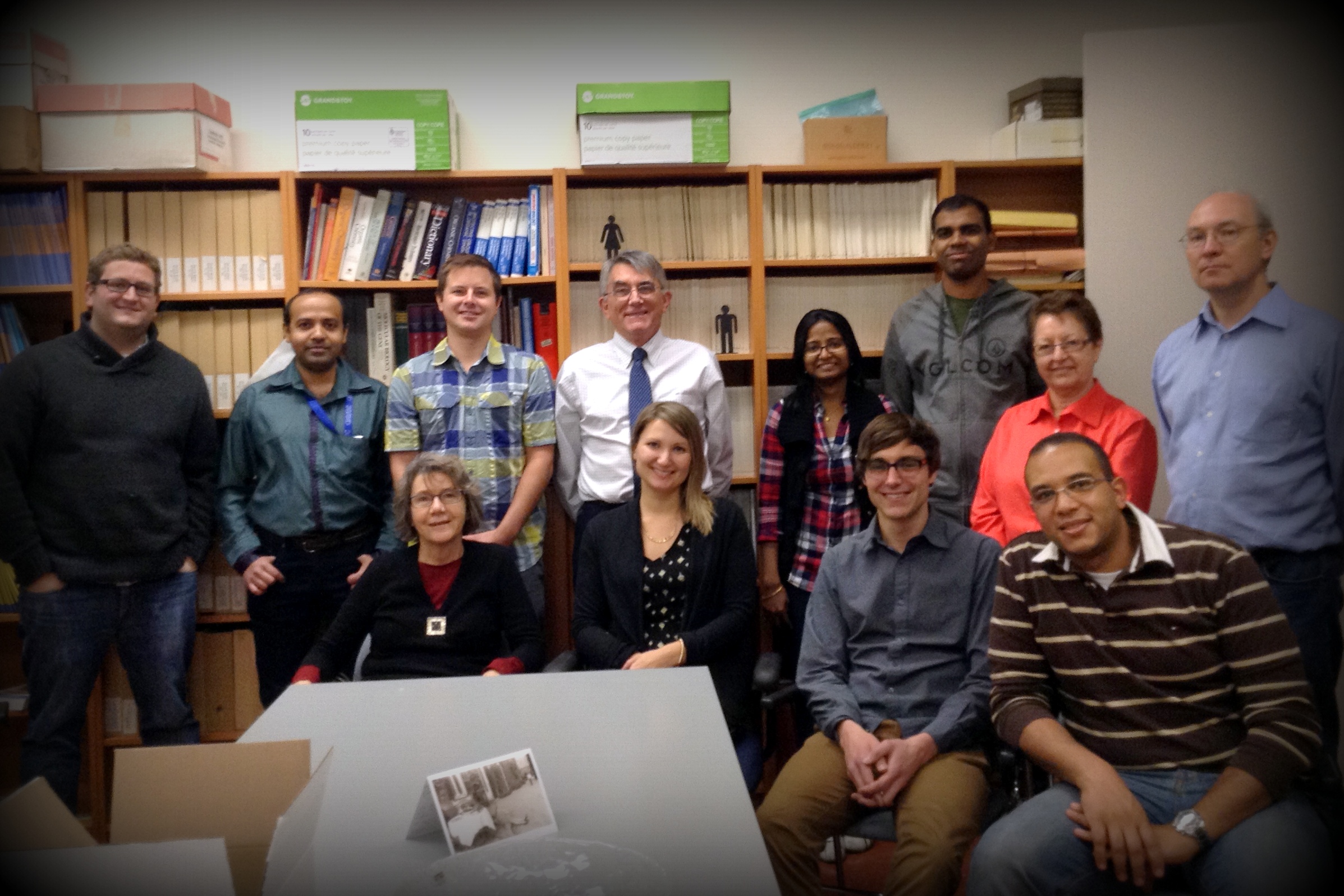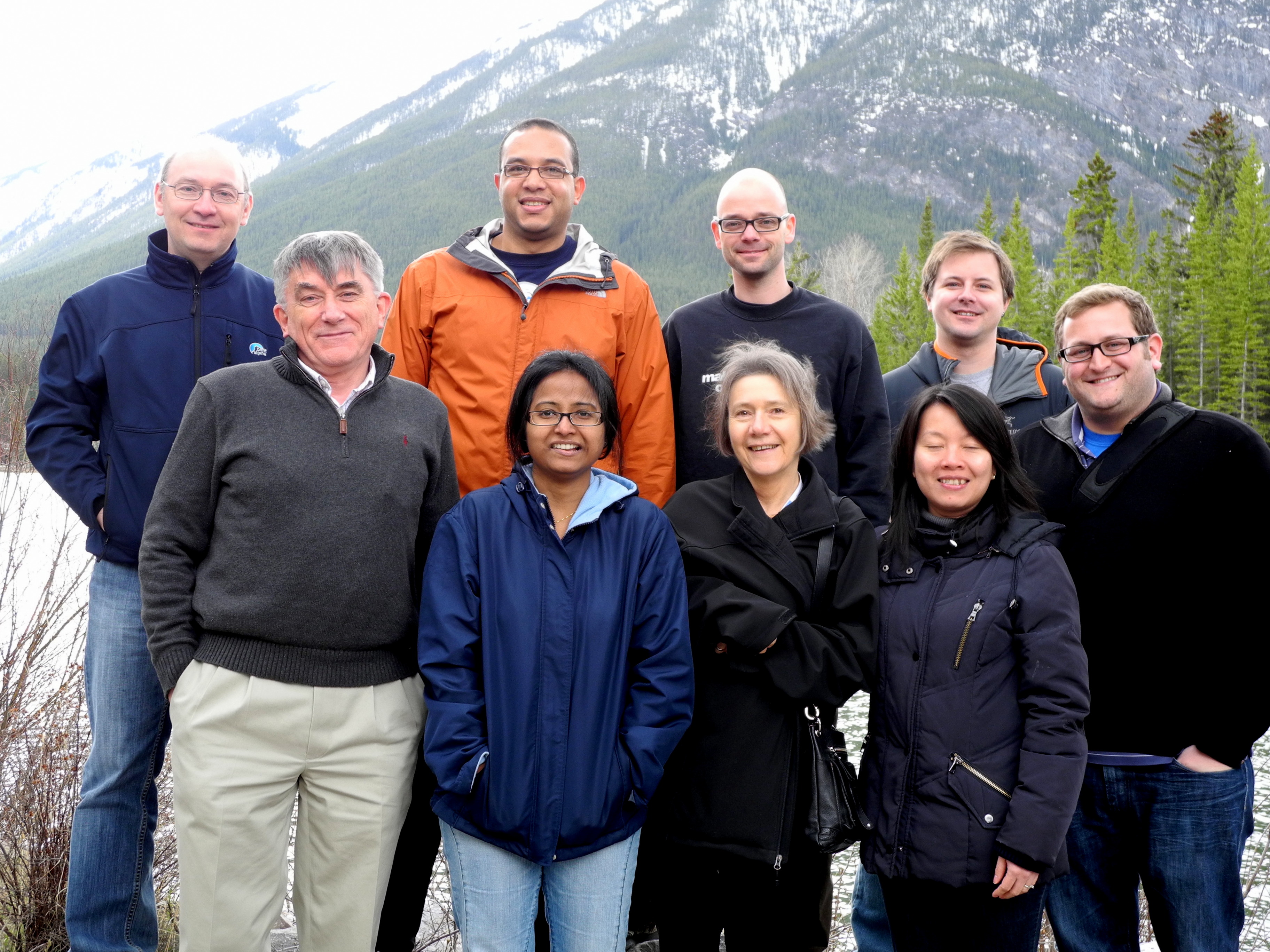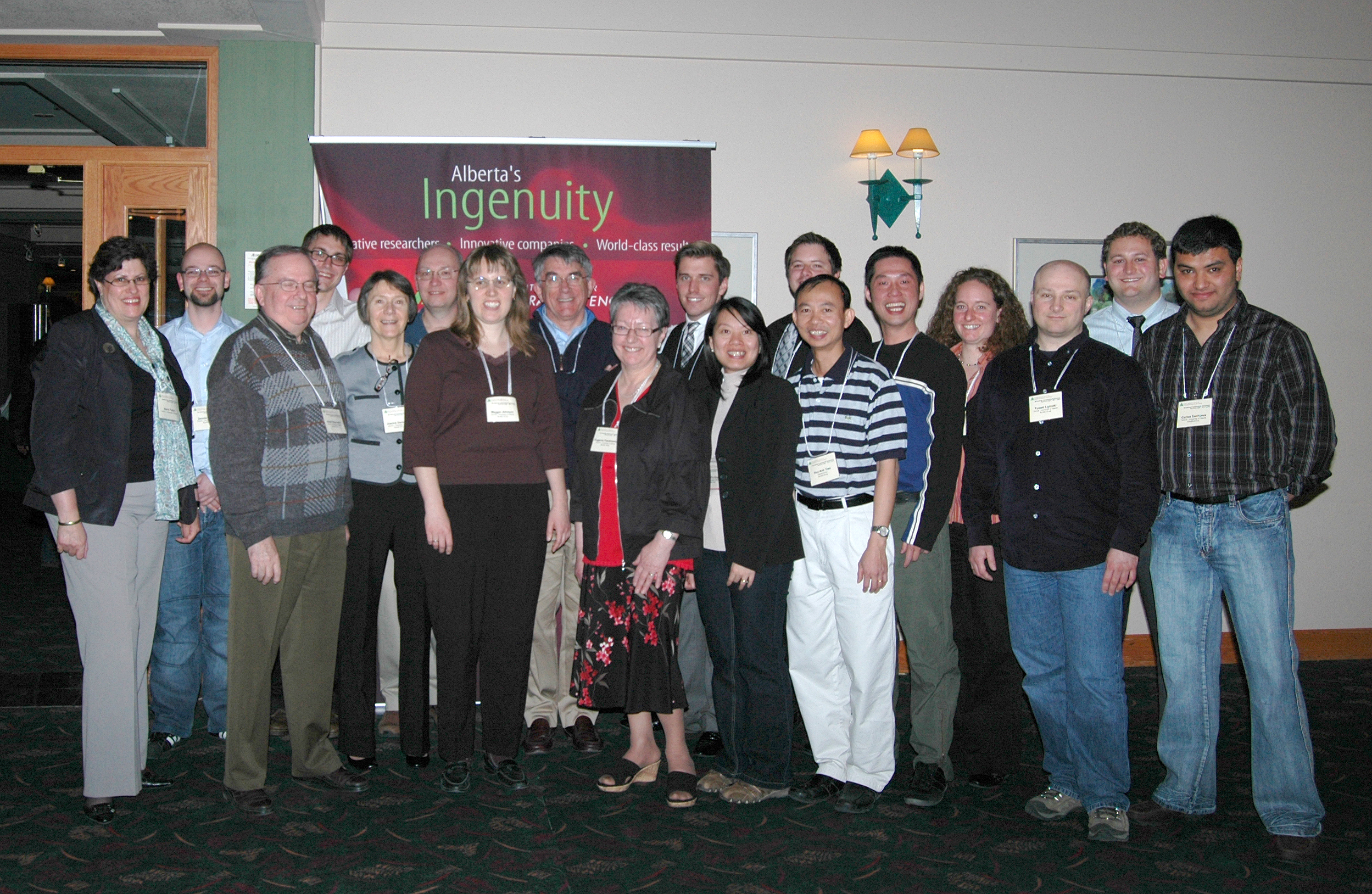|

Theory is when you know everything and nothing works.
Practice is when everything works but no one knows why.
In our group, theory and practice are combined: nothing works and no one knows why.
David Bundle is a Professor of Chemistry, the Raymond U. Lemieux Chair in Carbohydrate Chemistry, and a Distinguished University Professor at the University of Alberta. Working with Ray Lemieux, Dr Bundle was part of the group that carriedout the first rational synthesis of blood group antigens and theircovalent attachment to proteins for use as artificial antigens. Dr Bundle combines investigation of antigen three-dimensional structural detail with studies of antibody-antigen interactions by physical methods including NMR and microcalorimetry. His contributions and advances in the immunochemistry of bacterial and mammalian antigens include the structural elucidation of the capsular antigens of Neisseria meningitides; the first rational synthesis of blood group antigens and their use as artificial antigens and immuno-adsorbents; development of new synthetic methods for complex oligosaccharide synthesis; the first crystal structure of a carbohydrate-antibody complex; conformational analysis of oligosaccharides in solutions; correlation of the structures and serology of the Brucella O-antigens that finally resolved decades long confusion of surrounding these antigen and so called “polysaccharide B" design of high avidity multivalent ligands for multi-subunit proteins, specifically for the Shiga like toxin of pathogenic E. coli O157:H7 (which leads to "hamburger disease"). His current work focuses on characterizing the monoclonal antibodies that exhibit protection in animal models of Candida albicans infection and developing novel conjugate vaccine constructs to combat this fungal disease. He is also now extending his earlier work on Brucella O-antigens with further investigations aimed at designing unique diagnostic reagents and potential vaccine antigens.
Examples of our recent work have focused on the molecular recognition of complex carbohydrates by proteins at the surfaces of mammalian cells and of microbes. This provides a basis for understanding biological function of complex glycans, especially in the areas of infection and immunology. We utilize the power of chemical synthesis to create modified antigens that can reveal the structural basis of the recognition of carbohydrate antigens by antibodies, bacterial toxins and lectins. The primary areas of current research deal with design of molecules to neutralize bacterial toxins (Nature, 403, 669-672, 2000; Angew. Chemie Intl. Ed., 47, 672-676, 2008; Proc. Natl. Acad. Sci. (USA), 105, 16837-16842, 2008) and the design of conjugate vaccines for prevention of serious microbial infections (Proc. Natl. Acad. Sci. (USA), 105, 13526-13531, 2008; PLoS One 7, e35106, 2012, J. Biol. Chem. 287, 18078-18090, 2012).
 
Our research is based on a long standing interest in the chemistry and glycobiology of complex carbohydrate antigens of bacterial and mammalian cells. Our earlier work included development of methods to synthesize and utilize neoglyconconjuagtes, for example in the creation of monoclonal antibodies with well-defined binding profiles. Subsequently these antibodies were the topic of interdisciplinary collaborations that resulted in the first crystal structures of an oligosaccharide-Fab complex and characterization of the energetics of the molecular recognition event by isothermal titration microcalorimetry. The group was also active in the application of NMR methods for primary antigen structure determination and in the determination of solution conformation in the free and bound state.
We have continued to utilize and combine the tools of synthetic chemistry, biophysics and structural biology to address questions related to the intrinsically weak interactions that characterize sugar-protein interactions. We have combined three dimensional structural detail with studies of antibody-antigen interactions by physical methods including NMR and microcalorimetry, and we are using the well defined structural details of a variety of carbohydrate binding sites to pursue the rationale design of high affinity ligands.

Bundle Group, 2011
|




